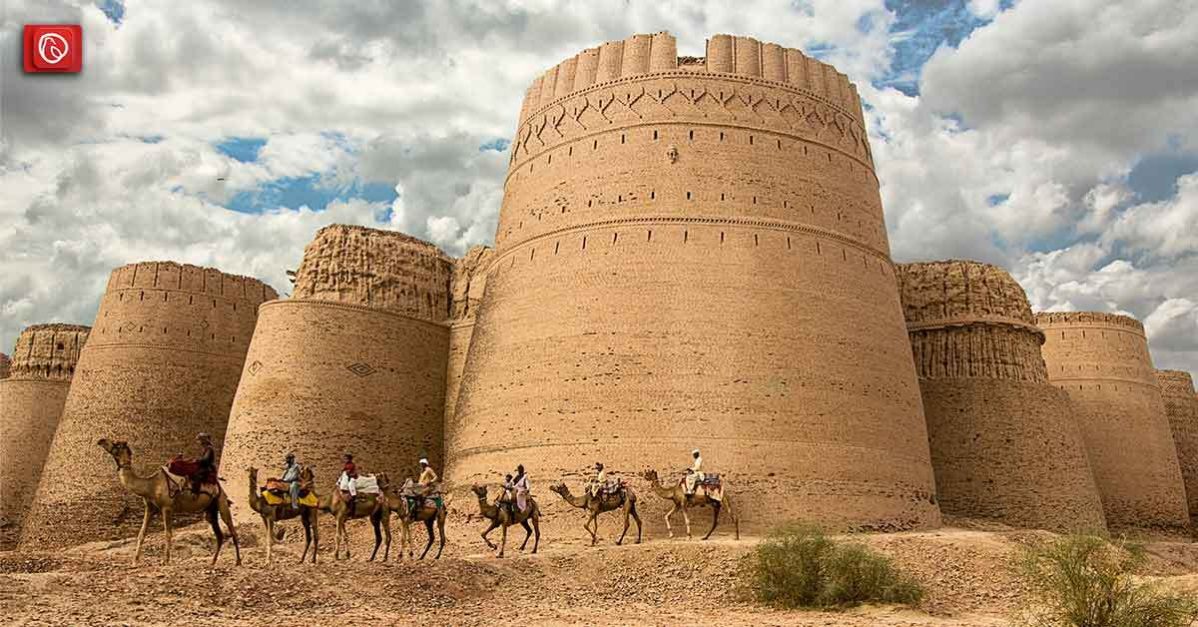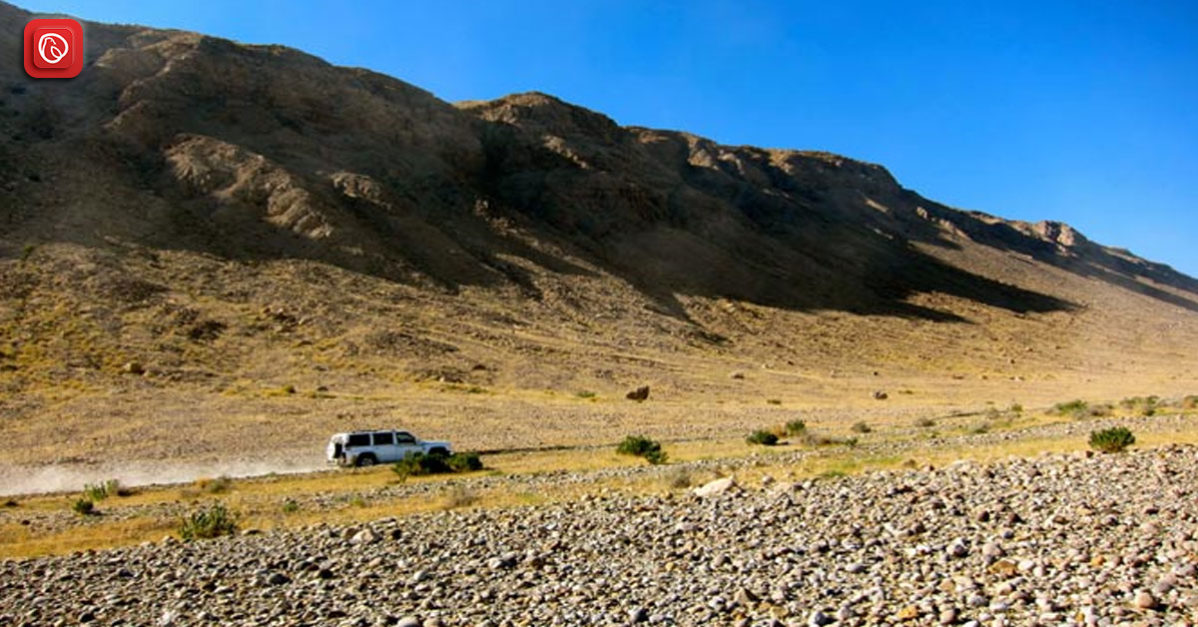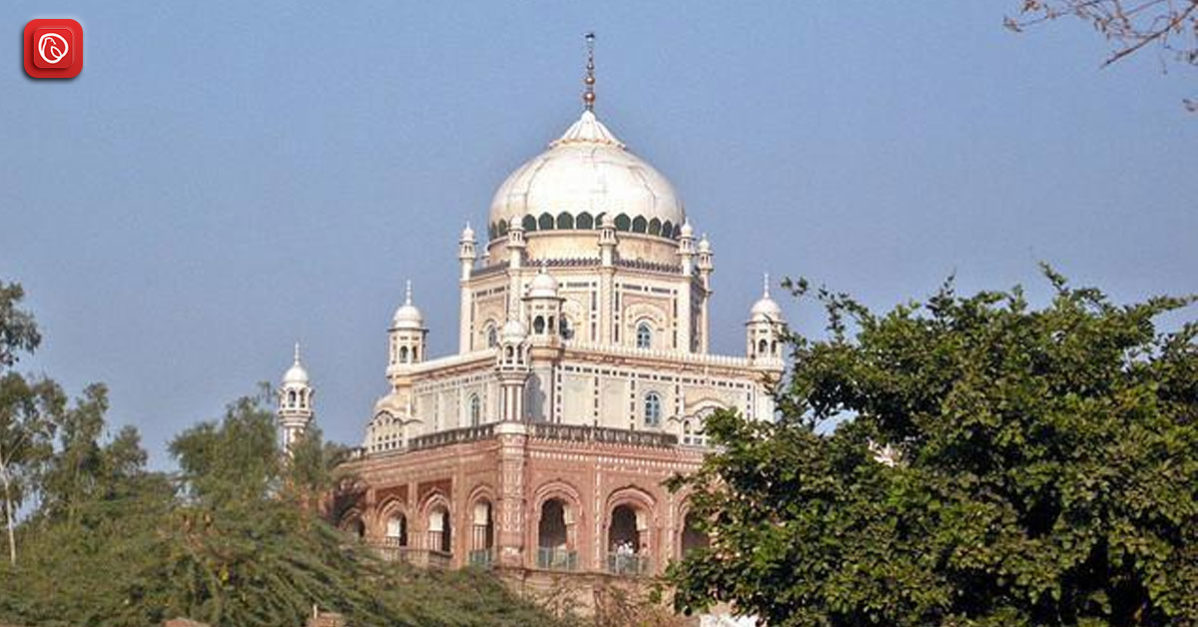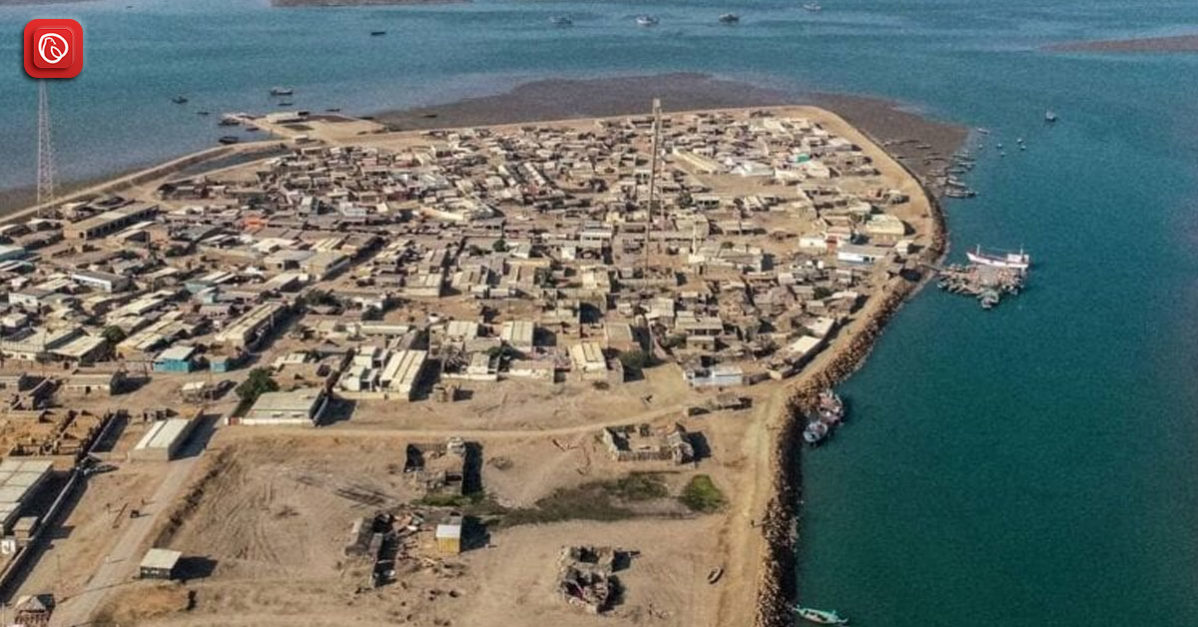Pakistan is a country known in the world for its vast variety of tourist attractions. From majestic mountains to humongous deserts, Pakistan has all. If you are fond of adventures and want to explore the deserts of Pakistan, you should visit the Cholistan desert.
Overview of Cholistan Desert
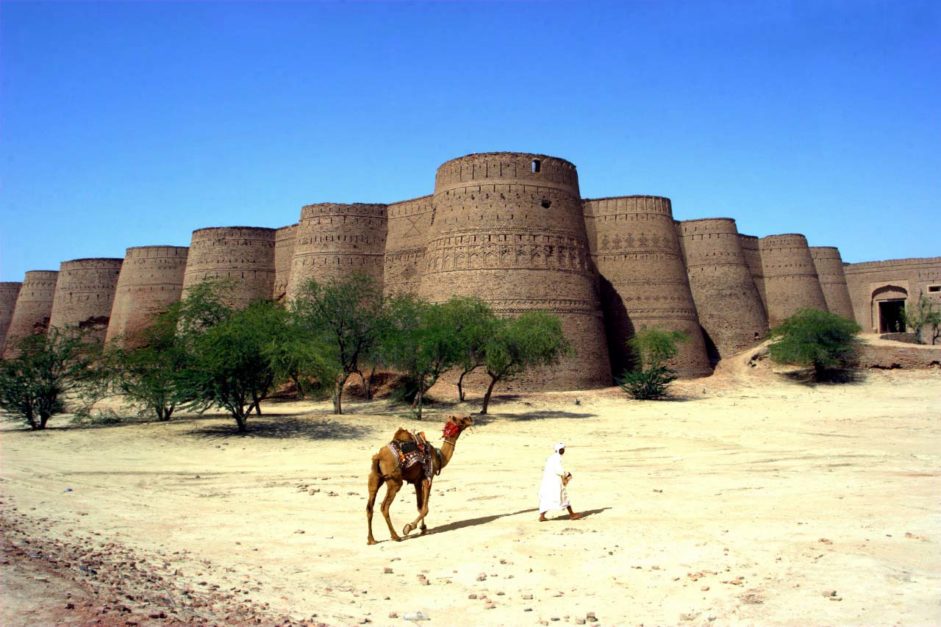
Cholistan, the famous desert of Pakistan, is usually referred to by its indigenous name, Rohi. It is situated thirty kilometers away from Bahawalpur and is included in the Punjab province of Pakistan. It is well-known for its forts and the traditional camel race event.
The deserts of Sindh and Cholistan are next to one another. The people of Cholistan are known for their simplicity, as their lives are spent traveling from one location to another in quest of food while also tending to their livestock.
Because there is a lack of rainfall and water in Cholistan, most of the economy relies on the country’s livestock. Crafts produced in the area include leather goods, weaving, and textiles. Wool carpets made in Cholistan are known throughout Pakistan for their exceptional quality, and the province of Cholistan is responsible for a significant portion of the country’s overall economy.
This exceptional grade of wool, which is derived from sheep and goats, is used to make beautiful rugs, carpets, and other woolen things. Wool is also used to produce blankets, which are necessary in this region due to the bitterly cold winter nights and the temperature’s tendency to drop below freezing occasionally. The khaddar that is produced locally is the textile that is used for clothing.
Meaning of Cholistan Desert
Cholistan translates to “Land of the Desert,” which is fitting given that the name “CHOL” originates from the Turkish language, where it has the same meaning. The Cholistani people lead lives that are nomadic or semi-nomadic.
Location of Cholistan Desert
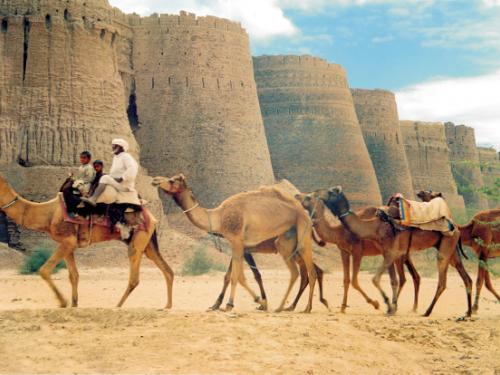
The Cholistan desert is situated in the districts of Bahawalpur, Rahim Yar Khan, and Bahawalnagar. It is considered to be one of the most famous places to visit in Bahawalpur. The desert land is characterized by soils that are salty, alkaline, and gypsiferous. Ever-changing dunes dominate the landscape. In Greater Cholistan, the dunes may reach heights of around 100 meters.
History of Cholistan Desert
Although it is currently a dry region, Cholistan was previously traversed by a significant river that was created by the confluence of the Sutlej and Yamuna rivers. Today, this area is arid. Along the dry bed of the Hakra River, which runs through the area, various sites of the Indus Valley civilization and the Harappan culture have been uncovered, notably the vast urban site of Ganweriwal. This riverbed also runs through the area.
Between the years 4000 and 600 BCE, when the river altered its course, the river system provided support for the growing number of towns in the area. The river could carry substantial quantities of water and ran downstream at least as far as the current location of Derawar Fort.
In the 1970s, Cholistan had a list of over 400 Harappan sites, and in the 1990s, it had an additional 37 sites on the list. It is possible that Cholistan was one of the most productive places during the time of the Indus Valley Civilization due to the high population density found there.
After the end of the Harappan period, Cholistan was inhabited by people who belonged to the Cemetery H culture. This culture developed as a surviving regional variety of the Harappan culture and was succeeded by the Painted Grey Ware culture.
The region developed into a hub for the commerce of caravans, which resulted in the construction of an extensive network of forts throughout the medieval period. The Derawar Fort is the most well-preserved example of this network of forts.
Other significant forts in Cholistan include Meergarh, Jaangarh, Marotgarh, Maujgarh, Dingarh, Khangarh, Khairgarh, Bijnotgarh, and Islamgarh. Forts that lie roughly parallel to the Indus and Sutlej Rivers and are on the Tentative List of UNESCO World Heritage Sites may be found around forty kilometers south of this location. Forts such as Bara, Bhagla, Duheinwala, Falji, Kandera, Liara, Murid, Machki, Nawankot, and Phulra are examples of some of the region’s smaller forts.
Culture of Cholistan Desert
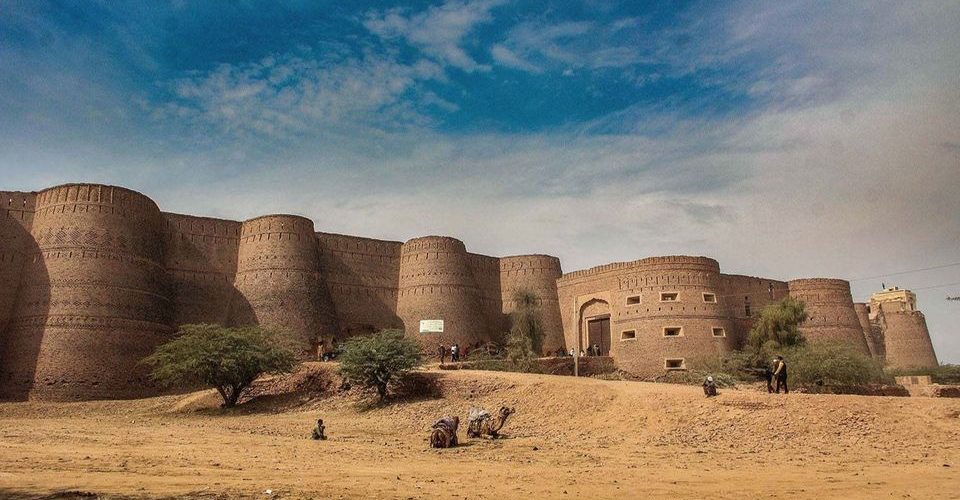
The Indus Valley has continuously been inhabited by nomadic tribes that wander from place to place. These tribes enjoy living in remote areas because it allows them to live their lives without interference from outsiders, which in turn enables them to develop their own distinct and individual cultures.
Cholistan was also shielded from the impact of other cultures up to the time of the Mughal Empire. The Mughal emperor Akbar oversaw its transformation into a fully functional and productive entity throughout his reign.
The entire region was governed by several rulers who kept a close watch over their borders.
The rulers were the most significant patrons of the arts throughout this period, and the numerous crafts went through a period of simultaneous and parallel growth, each of which influenced the others.
The culture of the Cholistan desert is so distinctive and stunning that it distinguishes it from other cultures in a significant way. The women wear brightly colored garments with very subtle needlework, which is practically the specialty of this region, while the males wear brightly colored turbans.
Only the raising of cattle and the enterprises directly tied to it significantly contribute to the revenue. This supply can meet the demand for milk, butter, and animal fats. There are around 1.6 million cattle in the region, which can quickly grow significantly if the government makes concentrated efforts to raise the production level in this region.
They turn their attention to various creative skills like weaving fabric, making pottery, and working leather during the brutal winter months when there are fewer animals to hunt, and the weather is more severe. Because of the area’s exceptionally fertile soil and a wide variety of goods, including pitchers, Surahies, glasses, and piyalas, the pottery business is prospering here.
Things you can buy at Cholistan Desert
People of the Cholistan desert make and sell the following products to the masses.
Wool
The region is known for producing wool for carpets of an exceptional grade. It’s used to make cozy things like rugs, carpets, and other floor coverings during the winter. In addition, blankets are produced to fulfill the demand during the brutal winter season when the temperature drops below the freezing point.
The money is made by selling the wool that is obtained from sheep. The region is responsible for producing a wide variety of textile goods, including, but not limited to, khaddar textiles and khaddar bedclothes of the highest quality.
Camel items
Desert people place a high premium on camels as a means of transportation. In addition to their value as modes of transportation and loading aids, camels’ skin and wool are highly sought-after commodities in their own right.
Falsies, stunning wool blankets, are made by spinning and weaving camel wool into rugs, which are both fashionable and long-lasting. In addition, the leather of the camel is employed in the production of hats, goblets, and pricey lampshades.
Leather items
Because of the high concentration of cattle in this area, leatherworking is another essential component of the local cottage economy. In addition to the things that have already been listed, this region is known for its Khusa (shoes).
Cholistani khusas have gained a lot of notoriety due to the high quality of their craftsmanship, as well as their diverse and abundant design options, mainly when they are sewn and embroidered with golden or vividly colored threads.
Jewellery
The citizens of Cholistan have a strong preference for jewelry, particularly gold-based pieces. The Nath (nosegay), Katmala (necklace), Kangan (bracelet), and Pazeb (bangle) are some of the most prominent pieces of jewelry that they create and put on (anklets).
Cholistan is also known for producing bangles made of gold and silver. The natives of the area similarly work with enamel, making enamel buttons, earrings, bangles, and rings.
Language spoken
There is a significant population that speaks the Seraiki language, which belongs to the Lahnda dialect family or the Lahnda Languages grouping. This region is home to many Sufi poets and saints, such as Khawaja Ghulam Farid, who contributed significantly to the development of Seraiki culture through the poetry he authored in the language of that region.
Cholistan Desert Weather
The climate of Cholistan can be described as a dry and semi-arid tropical desert with relatively low yearly humidity. The average temperature in Cholistan is 28.33 degrees Celsius (82.99 degrees Fahrenheit), with July being the warmest month and having a mean temperature of 38.5 degrees Celsius (101.3 degrees Fahrenheit).
In the winter, it may be as cold as 0 degrees Celsius (32 degrees Fahrenheit). Even though droughts are pretty regular, Cholistan sees an average rainfall of up to 180 millimeters, with July and August being the months with the most precipitation.
Drawar Fort: A Historical Monument in the Cholistan Desert
Drawar Fort, 48 kilometers away from Dera Nawab Sahib, is the most notable structure in the Cholistan Desert (once the headquarters and the seat of the rulers of Bahawalpur state).
The river Ghaggar, which is also named the Hakra in Pakistan but was known as the Sarasvati in Vedic times, initially provided ample irrigation for the surrounding area. There are about 400 archaeological sites that date back to the Indus civilization and can be found crowded near Drawar Fort.
These sites are spread out over the dried-up riverbed 500 kilometers long. The annual rainfall in the desert averages 5 inches, and there is minimal crop production due to the lack of water. Because of its history and connections to the Indus Civilization, the Drawar Fort is a popular destination for tourists from all over the world.
This is because the Indus Civilization is one of the oldest civilizations in the annals of global history. There are remnants of the Nawab’s quarters in the Drawar Fort, formerly the house of the Nawab of Bahawalpur before it became a tourist attraction. The Drawar Fort was once a residence for the Nawab of Bahawalpur.
When going across the Cholistan Desert, one comes upon a chain of forts that were erected at intervals of 29 kilometers from one another. These forts most likely acted as guard stations for the camel caravan routes. These fortifications were arranged in three rows.
The first line of forts stretched from Phulra to Lera, the second from Rukhanpur to Islamgarh, and the third from Bilcaner to Khaploo. The final line of forts stretched from Khaploo to Phulra. They were constructed with double walls made of gypsum stones and mud, even if they are currently in ruins. Some of them date back to 1000 BC, and throughout their history, they have been repeatedly destroyed and rebuilt.
Jeep Rally
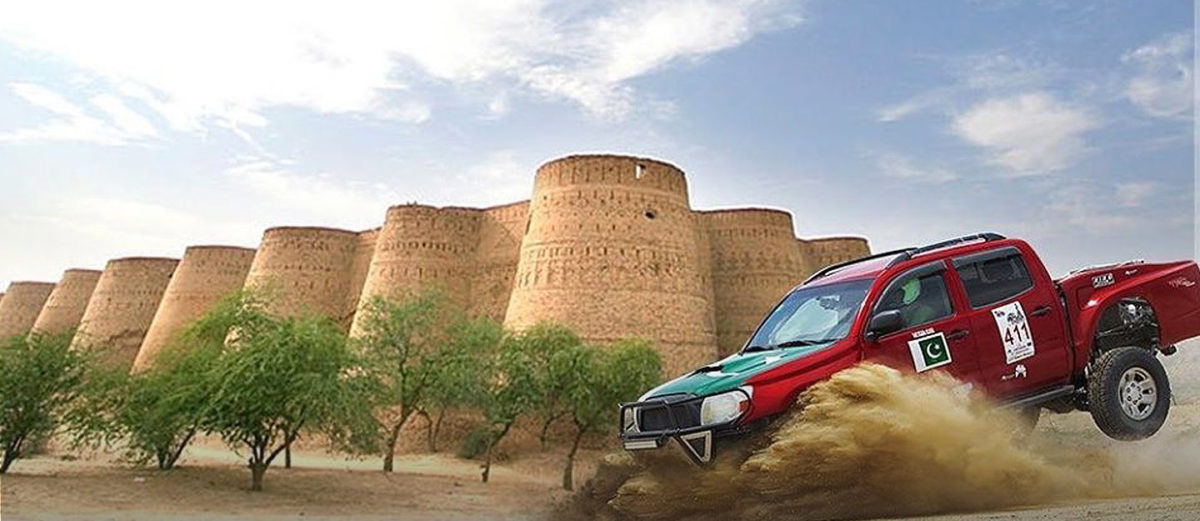
The TDCP Cholistan Jeep Rally has been going on continuously since 2005 and takes place close to the Drawar Fort. Over one hundred skilled desert drivers in customized vehicles engage in this rally, which attracts hundreds of thousands of spectators from all over the world.
This action introduced this land as part of Pakistan and has a rich culture. This initiative on the part of the government of Pakistan was a fantastic step in the right direction.
So, this was all you need to know about the Cholistan desert. For more informative blogs, visit the Graana blog.
